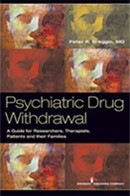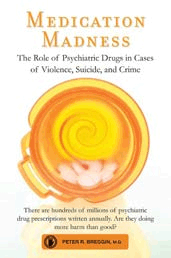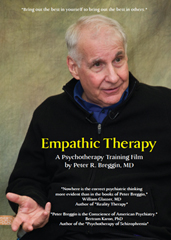Scientific Study—Or Megadose Mass Murder?
By Peter R. Breggin MD and Ginger Ross Breggin
From The New York Times to the Journal of the American Medical Association (JAMA), partisans have been promoting a “scientific study” that supposedly proves that chloroquine, and by association, hydroxychloroquine, are too dangerous to use in treating COVID-19 patients. The study gave such megadoses of chloroquine to such frail and ill patients that many were bound to die of drug toxicity. The ultimate motivation, it seems, was to discredit “Trump’s drug,” even at the cost of human lives.. Meanwhile, in Brazil where the study originated, the researchers are now under investigation as suspects in the deaths of their research subjects. At the very least, their recklessness seems to meet the standard of manslaughter by displaying “extreme, reckless disregard for life.” It may also be an extraordinary example of politically motivated mass murder under the guise of scientific research. Meanwhile, the American medical and media establishment continues unabated to use the study to contradict the use of hydroxychloroquine for COVID-19 patients.
When science becomes politicized, as during the current COVID-19 pandemic, it becomes especially subject to human corruption. Still, we are shocked at the extremes to which scientists in Brazil and media and medical authorities in the US will go to stifle use of hydroxychloroquine.
A Rush to Judgement in Favor of Stopping Hydroxychloroquine
The study we call “Megadose Mass Murder” was released prepublication on-line on April 11, 2020. The partisan New York Times was so happy to thump Trump’s drug that it published a big story in support of it on April 12, 2020, one day after the prepublication report.
The article was then rushed to formal publication on-line on April 24, 2020 by the Journal of the American Medical Association on its JAMA Network Open. The journal of the AMA even gave on-line Continuing Medication Education (CME) credits to doctors who read it.
Simultaneously, on April 24, 2020, the FDA ramped up its attack on hydroxychloroquine, limiting its use to hospitals, in an effort that would eventually tell doctors to stop using it at all.
ABC News Again Uses the Brazil Study Against Trump
The influence of the Brazil study was recently revived on August 8, 2020 when ABC News published “Timeline: Tracking Trump alongside scientific developments on hydroxychloroquine.” The ABC timeline aimed at showing that President Donald Trump’s support of hydroxychloroquine was contrary to “science.” Here is ABC’s description of the murderous study:
April 13: Study in Brazil linking hydroxychloroquine to fatal heart problems makes headlines
A small research trial in Brazil abruptly ends after coronavirus patients taking a higher dose of chloroquine in combination with azithromycin developed irregular heart rates. Within three days of beginning treatment, researchers started noticing heart arrhythmias in patients taking the higher dose of chloroquine. By the sixth day, 11 had died.
Notice that headline on the comment declares that the study linked hydroxychloroquine to fatal heart problems. But the study in fact was about a much older and more dangerous drug, the original malarial drug treatment, chloroquine.
The Size of the Megadose
The Brazil study used enormous repeated doses of chloroquine: 1200 mg daily for 10 days. This dose is so large that the authors could not cite a single other clinical study that approximated this megadose range. To get even close, they had to cite an experimental study involving very ill cancer patients who were also getting cancer drugs and even then the cancer study drug was hydroxychloroquine (1200 mg daily for 28 days) rather than the more dangerous chloroquine.
The authors had to know that they were treading on dangerous territory, risking many deaths. Respected sources, such as all recent editions of the classic Goodman & Gilman’s The Pharmacological Basis of Therapeutic (2011, p. 1405), state:
“Toxicity and Side Effects. Taken in proper doses, chloroquine is an extraordinarily safe drug; however, its safety margin is narrow, and a single dose of 30 mg/kg may be fatal.” [italics added]
The Brazilian study gave 1200 mg per day for 10 days. Every single dose was in the fatality range of 30 mg/kg for a 40 kilo or 89.1 pound patient. Since the patients in this study were very sick, since many had comorbid illnesses, and since a number were very old, it is likely that some were probably under 90 pounds. But we need not quibble because the 30 mg/kg death range is for a single dose—and these doctors gave 10 days of this toxic megadose.
As already noted, all the patients were very ill with COVID-19, some were elderly, and many had comorbid disease, including heart disease. The lethal dose for them would be considerably below 30 mg/kg. It is no exaggeration to observe that, given their physical condition and frailties, all the patients in this study were at risk of death from the megadoses of chloroquine administered to them.
In addition, these high doses over a period of ten days are higher than they even seem because chloroquine has an extremely long half-life, measured in days and weeks rather than hours, again according to Goodman & Gilman’s The Pharmacological Basis of Therapeutic (2011, p. 1404). There is also evidence that the half-life increases with the dose. Altogether, this means that the high doses over ten days would accumulate in increasingly greater concentrations that would persist well beyond the termination of drug treatment—leading to increased lethality.
Many of the patients were probably too ill to properly metabolize or break down the drug, increasing the size of dose in terms of its concentration in the blood and hence its lethality.
The authors conducted a second arm of the study which they misleadingly called “low-dose,” compared to the “high-dose” arm. In the low-dose arm, they gave 900 mg the first day and 450 mg for four more days. Although this is much higher than recommended by many clinicians, it not nearly as dangerous as the megadose arm, and fewer patients died. The megadose total was more than 4-times that of the lower dose.
Chloroquine Should Never Have Been Used
The patients given these extraordinarily high doses approaching the one-dose lethality range should never have been treated with either chloroquine or hydroxychloroquine. Chloroquine and hydroxychloroquine are not effective in treating very ill patients, for whom there are no confirmed drug treatments, but they are effective as prophylaxis and for treatment early in the disease process in combination with azithromycin and zinc.
By contrast, the megadose patients in this study were at death’s door in “intensive care units” for the “treatment of severe COVID-19 patients.” They were described as “critically ill” (p. 1). Some were “unconscious,” we learned from a discussion of ethical issues in the prepublication version that was omitted from the JAMA published version. Five of the megadose patients were over 75 years-old and many had hypertension, diabetes, alcoholism, or chronic kidney disease.
Because the megadose was certain to be very hazardous to these extremely ill intensive care patients and because chloroquine would probably be of little or no help to them in their condition, experimenting on them with this drug was highly unethical. The study could accomplish little more than to confirm two well-established facts—that this ordinarily very safe drug becomes lethal at too-high doses and that it does not substantially help very sick COVID-19 patients late in their illness.
In addition to giving an extremely high, unprecedented close-to-fatal dose of a drug known to be unsafe when outside a narrow range of lower doses, this murderous “study” was useless. The authors admit in their analysis that the study could not properly test for any effectiveness it might have because it had no control group. This made the risk/benefit ratio of the treatments even more lopsided with a huge risk and no ability to demonstrate effectiveness, resulting in no justification for carrying out the study.
The drug was used in a way that was guaranteed to cause increased deaths with very little hope of mitigating the disease. The study was designed in a way that was bound to fail without adding new scientific information and without benefit to the patients It was a waste of human life.
The authors claim to have obtained informed consent. But no patient and no surrogate would have rationally endorsed participation in this or any other similar study if they had been informed that it was certain to gravely increase the risk of death without providing any significant health benefit.
How the Study Was Stopped
When the death rate in the high dose group reached 39%, the megadose arm of the study was ended. Sixteen of the 41 patients in the high-dose arm had died.
To add to their malfeasance, it was not the researchers themselves who ended the deadly megadose arm. According to Science, “When the trial’s independent data safety monitoring team saw the number of deaths in the high-dose group rise rapidly, they alerted the researchers and asked for that arm to be stopped.”
This led to an interesting twist when the study authors, at the last minute, decided to invite the safety monitoring team (see page 13) to be added to the lengthy authors list. Perhaps the researchers were trying to make the monitors look like a part of the team, when they were outside monitors who independently stopped the study.
Despite using such dangerous doses, the authors did not take the safety measure of monitoring the serum concentrations of the drug which can vary considerably from patient to patient.
In addition, the authors could have increased safety by giving the medication based on each patient’s weight rather than giving each one the same huge load of medication.
What Was Motivating the Investigators?
What possibly could have been on the minds of the megadose researchers?
Those who planned the clinical trial created a no-win study to demonstrate that the highly politicized treatment known as “Trump’s drug” was too dangerous to treat COVID-19 patients. They administered the medications in potentially lethal doses with no other discernable goal than to discredit hydroxychloroquine and President Trump, along with their own Brazilian President, Jair Bolsonaro, a supporter of both Trump and hydroxychloroquine. As the next section will confirm, these political motivations are being raised by Brazilian critics of the study.
Megadose Doctors Under Investigation in Brazil
Some of the investigators in the study are being criminally investigated in Brazil. But like so many corrupt coronavirus studies created for political purposes, it has helped to discredit the only demonstrably useful drug, hydroxychloroquine, especially in combination with azithromycin and zinc. The Brazilian study has also been used to ridicule Trump’s support of the drug, as well as their own president’s support—ultimately to pave the way for much more expensive, dangerous, and unproven drugs compared to hydroxychloroquine.
We have documented the efforts made by Anthony Fauci, the director of NIH’s Institute for Allergy and Infectious Diseases, to promote the ineffective and highly dangerous remdesivir, and to discourage use of hydroxychloroquine. Fauci is aligned with powerful drug companies who stand to make a great deal of money by developing newer and far more remunerative drugs than hydroxychloroquine.
Science magazine recently wrote with great sympathy about the authors of the megadose study who are being investigated and persecuted. Perhaps without intending to, Science makes clear the political entanglements and potential motives of the investigators. As it turns out, those on the left in Brazil hate their own rightwing president as much as the left in America hates Trump. Here are two excerpts from the Science article:
‘It’s a nightmare.’ How Brazilian scientists became ensnared in chloroquine politics By Lindzi Wessel Jun. 22, 2020 …
In April, a team led by Marcus Lacerda, a clinical researcher at the Heitor Vieira Dourado Tropical Medicine Foundation in Manaus, Brazil, published a study showing chloroquine can increase mortality in COVID-19 patients. Since then, they have been accused of poisoning their patients with a high dose of chloroquine just to give the drug—praised by U.S. President Donald Trump and his Brazilian counterpart Jair Bolsonaro—a bad name. Social media attacks, defamatory articles, death threats, and even a legal inquiry into the group’s work have left Lacerda and his team stressed and exhausted.
Other scientists have watched the public spectacle with dismay. But some agree that about half of the patients in the trial received such a high dose that severe side effects, or even deaths, were not unexpected. Lacerda’s trial was one of several using doses that were “dangerous and definitely too high,” says Peter Kremsner of the University of Tübingen in Germany, who is using far lower doses in two trials of hydroxychloroquine. …
Then came the inquiry from the federal prosecutor’s office—the first such investigation of a medical study approved by an ethical review board, according to the research team’s lawyers. A Brazilian official announced the investigation on Twitter and posted a nine-page document that asked Lacerda’s team to justify everything from their choice of chloroquine to why the study didn’t focus on patients in earlier stages of COVID-19. Many of the questions centered on how the dose was determined and whether patients in the study experienced cardiac problems. The investigation is ongoing.
We believe that, from any reasonable viewpoint, the investigators are asking good questions.
In closing, we want to acknowledge and to thank the members of America’s Frontline Doctors and founder Simone Gold, MD for alerting the public to this study. Dr. Gold is an Emergency Medicine Specialist in Los Angeles and has over 31 years of experience in the medical field.
| Peter R. Breggin MD has been a medical expert in dozens of criminal, malpractice and product liability legal cases that involve death caused by medications. This report reflects those decades of experience, including researching and writing formal forensic reports on the role of medications in causing death. http://www.breggin.com |





